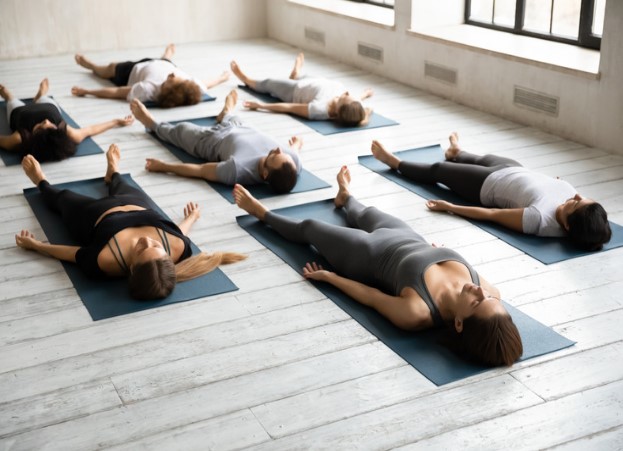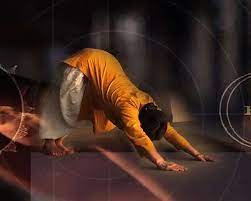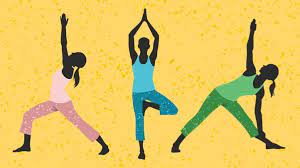Badha Padmasana (Bound Lotus pose) Steps, Benefits and Contraindications.
Bound lotus pose is also called Baddha Padmasana or Bandha Padmasana. It is an advanced version of the Lotus pose. It is a seated pose, so you can also use it for meditation. The name of the asana traces its etymology from Sanskrit verses, and hence the meaning stands as – ‘Baddha‘ means ‘bound’ or ‘locked’, ‘Padma‘ means ‘lotus’ and ‘asana‘ means ‘pose’. You will also hear the name Locked Padmasana being associated with this pose.
How To Do It?
⦁ You can start from the Padmasana (The Lotus Pose).
⦁ Try to keep your feet hooked on the thighs, close to the groin region.
⦁ Place your right arm behind your back and try to reach around the waist, till your right hand is close to your left hip, and try to grasp the right thumb of the toe.
⦁ In the same manner, place your left arm behind your back and cross over the right arm and try to reach around the waist, till your left hand is close to your right hip. Now bend forward and try to grasp the left thumb.
⦁ Hold this position for a few seconds. Now your arms and legs are tightly locked in this position, so try to keep your spine, neck and head straight in one line.
⦁ Look straight and breathe normally, while holding this pose.
⦁ For beginners, try to be in this position a few breaths.
⦁ To release from this position, relax and breathe out. Then you can slowly get to the starting position. Now keep your hands alongside your body, keep your legs straight and take a deep breath and relax.
⦁ You can do a minimum of 10 times of this asana for better results.
⦁ Initially, when you start this yoga asana, you may feel some pain in your abdomen, hips, thigh, and shoulder; but as you practice more you can do this asana more easily.
Also Read: sound healing course in rishikesh
Benefits of Badha Padmasana (Bound Lotus Pose)
⦁ While practicing the asana, most of the muscles undergo stretching. This asana also releases all kinds of tension from the body.
⦁ The regular practice of this asana leads to physical, psychological, and emotional well-being.
⦁ If you practice this asana on a regular basis, it affects three main tissues, the connective tissues, called tendons, fascia, and ligaments. All your muscles will be able to move through the complete range of motion.
⦁ The regular practice of the asana, will make the spine strong.
⦁ Regular practice of this asana also stimulates the Anahata Chakra or the Heart Chakra.
⦁ When you practice this asana, blood rushes towards the groin area, and so you can get relief from sexual issues.
Contraindications
⦁ If you are pregnant or menstruating, you should refrain from practicing this asana.
⦁ If you suffer from Sciatica, then also you should not do this asana.
⦁ If you have any sort of knee injury, then you should refrain from practicing this asana.
Learn to know more about badha padmasana you can visit yoga school in rishikesh and join 100 hour yoga teacher training in rishikesh and 200 hour yoga teacher training in rishikesh





